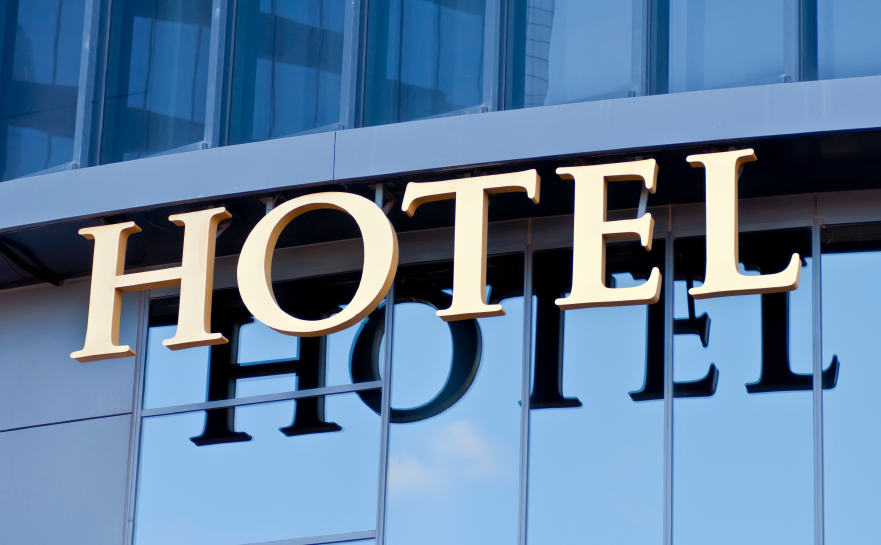Safeguarding Hotel Guests

By Chad Callaghan, Principal, Premises Liability Consultants
Hotel Executives are not expected to be insurers of guests’ safety and security; however they do have a legal duty to provide reasonable measures for their protection. Decisions about security staffing or physical security measures should not be based solely on cost implications or occupancy levels, but instead should be based on a risk assessment that determines both the threats to the hotel and the vulnerabilities of the hotel. Only after knowing what the risks to the hotel are should mitigation measures be put in place. Mitigation measures need not be all encompassing, but instead may start with simple solutions and escalate as necessary.
As the U.S. economy continues to falter, many hotels and hotel companies struggle to determine the appropriate level of security that will balance the need for guest privacy and security with the economics of the hotel. When making such decisions, many hoteliers are not typically aware that safety and security can and will be the subject of scrutiny by juries when security litigation occurs. The genesis of this was the Garzilli v. Howard Johnson’s lawsuit in 1976, where singer Connie Francis was attacked in a hotel room and sued the hotel for negligent security. This is widely believed to be the first time a commercial business (Howard Johnson’s) was held liable for the criminal acts of a third party (the assailant). Since that time, civil litigation against property owners and managers has become commonplace. Recent studies indicate that hotels are among the top five commercial businesses being sued.
Duty of Care
All too often security staffing levels and technology in hotels are determined by financial capabilities or perceived operational need without consideration of the legal duty to provide reasonable care for the protection of guests. Exactly what constitutes reasonable care is not always easy to determine, but will surely include such things as crime in the area, prior incidents and size and vulnerabilities of the hotel property. One of the threats that can be overlooked is crime in the area of a hotel; that means a hotel needs to be aware of crime surrounding the hotel, and not just crime on the premises. Typically, the courts will allow crime within a 1-3 mile radius of the hotel to be considered. The theory is that crime can and will migrate.
There is sometimes a disconnect between those that set the budgets and pro formas for security and the expectation of the traveling public and the legal community as to what constitutes the appropriate level of security. Many hotel executives have attended world-class hospitality programs in college, but it is rare indeed to find a curriculum that includes comprehensive training in the legal aspects of hotel security.
Risk Assessment
Because of this duty to provide for the security of guests, the first step in determining the optimal level of security staffing or technology should be the development of a risk assessment.
Proper risk assessments include both an understanding of the threats to the hotel as well as the vulnerabilities that could allow a threat to be carried out. Examples of threats can range from simple thefts of guests’ personal belongings to front desk armed robberies to complex terrorist attacks. Each of these could be deterred or even prevented by recognizing and mitigating the vulnerabilities that allow the threats to occur.
Some examples of common vulnerabilities are inadequate access control, nonexistent or inoperable CCTV systems or ineffective training in the predictive indicators of terrorism. Once the threats and vulnerabilities are understood, the next step is to develop appropriate and cost-effective mitigation measures. Depending on the risk, these measures could include lighting, lock systems, CCTV, access control, security staffing, training and even landscaping. The best mitigation measures for hotels may use crime prevention through environmental design (CPTED) strategies, which rely upon the ability to influence offender decisions that precede criminal acts; thus they are true deterrents to crime rather than relying upon apprehension as a means of crime prevention.
Measured Approach
So what does all this mean to hotel executives, owners and management companies? First and foremost understand that decisions made about hotel security, including staffing, training, access control and other physical security measures cannot be made based solely on cost, or for that matter occupancy levels. Instead, hotels should balance these decisions based on the specific risks to the property. Second, mitigation measures generally can be implemented in an escalating manner, starting with the simplest fixes first. An example of this is a hotel beginning to experience minor theft from vehicles in their parking lot; Instead of jumping to the extreme of armed guards and access control gates, first try improving the lighting and trimming trees and bushes that block out light and restrict natural surveillance of the lot. At this stage, a hotel could also consider implementing more frequent tours of the lot or asking the local police department to increase their vehicular patrols if possible. If thefts continue, try restricting access to the lot by blocking off all but one entrance and exit. Next, possibly fencing the lot or going to paid parking with an attendant will resolve the problem. And only if all these measures fail, consider valet parking only as a means of controlling the problem. All too often hotel management will delay a response to criminal activity, and then overreact out of frustration when the problem does not abate. Neither of these responses is desirable – the first creates potential liability, the second creates over expenditures.
Legal Pitfalls
And while on the topic of appropriate response to criminal activity, another pitfall is the hotel implementing physical security measures that cannot be adequately monitored or responded to. This can lead a false sense of security for the hotel guests and worse, in legal duty of care parlance, to increased liability. An example of this is the installation of a surveillance camera in an area of the hotel that is experiencing criminal activity, but not having adequate staffing to monitor or respond to an event occurring in that area. In some cases, a hotel may have inadvertently set itself up for a higher expectation of response, and then failed to live up to that expectation.
It is important that hotels document any and all mitigation measures; Hotels are not expected to completely eliminate crime or problems, but should do what is reasonable under the circumstances to try to deter or prevent crime. Remember, hotels and other premises have a legal duty to provide reasonable care for the protection of guests and their property, but are not expected to be their insurers. This is one of the most difficult principles for laypersons to fully understand – just what exactly is reasonable or adequate when it comes to security? Unfortunately, there is no guidebook that answers this question; instead, a jury will deliberate and determine what they believe to be reasonable under the circumstances. The interpretation can and will vary in different parts of the country. This is particularly a United States phenomenon, but is gaining momentum in other parts of the world as well.
Guest Perception of Security
A final component to a robust security effort is the inclusion of the guests’ perception of security in the overall satisfaction metric. Guests can give the hotel important feedback on security measures that they feel intrude on their privacy, as well as feedback on those measures that may or may not make them feel safe. In addition, the mere asking of the question about the hotel’s security can add to their positive overall feelings about the hotel. While it is not readily known what the premium is that guests will pay for a vigorous security effort, it is almost certain that a poor security program will prove costly to a hotel in the long run, either in terms of lost business or in the cost of litigation.
Chad Callaghan is the Principal for Premises Liability Consultants, a sole proprietorship that provides consulting services and litigation support to commercial facilities and law firms. He also serves as the Safety & Security Consultant to the American Hotel & Lodging Association. He is formerly the Vice-President of Global Safety & Security - Americas for Marriott International, having had responsibility for the safety and security for all Marriott businesses and brands in the U.S., Latin America and the Caribbean. He has served the loss prevention profession for 37 years and Marriott International for 35 years. Mr. Callaghan currently serves on the Board of Directors for ASIS International and is a member of the Council on Litigation Management and the CSO Roundtable. He was recently named to the Henley-Putnam University Strategic Security & Protection Management Program’s Advisory Board. Mr. Callaghan can be contacted at 301-380-6894 or chad.callaghan@marriott.com
Republished from the Hotel Business Review with permission from www.HotelExecutive.com






